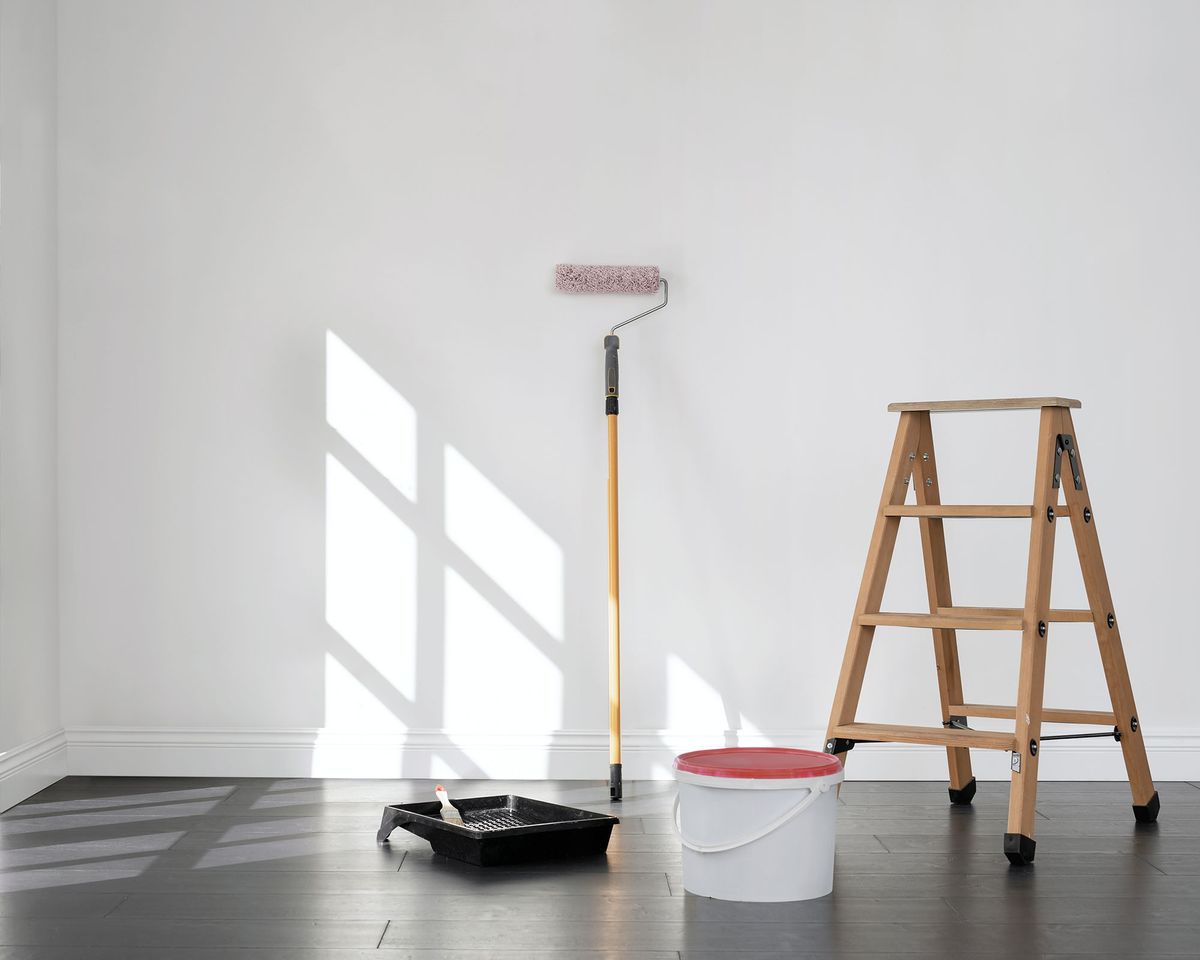Considering new living room ideas or embarking on a whole house renovation? Whatever you have in mind, painting is a remarkably simple and versatile way to make a space feel fresh and inviting. It’s important that you understand how to prepare your walls for painting because once your room is filled with furniture, it can become daunting to consider redecorating it.
If you’re wondering what you should do before painting a room from top to bottom or how to paint a wall, we have all the answers you need.
How to prepare walls for painting – 5 easy steps to follow
Anyone who says walls don’t need much prep clearly doesn’t care about the paint finish! A well-prepared wall will ensure better adhesion of your paint and a uniform and smooth appearance of your surfaces. Here’s everything you need to know about preparing your walls for painting.
1. Protect the area
Before you start, make sure that tarps and protective covers are laid out on the ground. Move furniture to the center of the room and cover with drop sheets. Gather all the tools and equipment you need to have everything at your fingertips. And finally, make sure your room is well ventilated with the windows open whenever possible.
2. Remove nails, hooks and screws
Start by removing all nails, hooks, screws and other hardware. If your walls contain duct tape or other adhesive sealant, use a scraper to remove it. The surface of your walls should be completely free of lumps and bumps.
Unscrew electrical outlet covers and light switch covers. In cases where this cannot be done, simply cover the remaining switches with painter’s tape. Will Thompson, Product Marketing Manager at Valspar, shares a helpful tip: “If you’ve unscrewed any light fixtures, glue the screws or bolts to the fixture so you don’t spend hours looking for them after you finish decorating.”
Fill Holes and Cracks Clean up all empty spaces before carefully filling holes and cracks. Marianne Shillingford, Creative Director at Dulux advises “digging out the cracks with the sharp corner of a scraper to make them a bit wider and deeper” before applying the sealant. The filler “will stay in place much more effectively,” she explains.
Be sure to use a good quality filler for the job and let it dry completely before filling or sanding. Once dry, these filled areas should be treated differently than the rest of the wall surface.
“The areas you have filled in will absorb the paint very well and may need a quick brush stroke with a brush loaded with a bit of top coat before applying a coat of paint all over the wall” , explains Marianne. “It seals the surface of the putty so you don’t see any smudges once it dries,” she confirms.
If you are dealing with cracks around the top of the room, where the walls meet the moldings for example, it may be best to use flexible decorator caulking.
“It’s a great product that you can easily apply with a caulking gun and once used you won’t be without it,” says Marianne.
3. Sand walls
To ensure the best possible finish, it is essential to sand your walls before any painting project. This is an important step regardless of how you previously treated your walls. Yuriy Kryvenka of New Jersey paint and decorating service, Hoboken Painter, recommends paying attention to the texture of the previous paint. “If the walls were painted with gloss paint, sanding will allow better adhesion before painting,” he says.
If a sanding block is perfectly sufficient, an electric sander will greatly facilitate the task. Try to use 120 grit paper and change it regularly, or whenever the grit gets clogged with dust.
Work from the top of the walls down and think about how you approach the moldings as they may require a different sandpaper.
4. Clean the walls
Removing all debris and dirt will result in a more professional finish, as Hoboken Painter’s Yuriy Kryvenka explains: “Paint wouldn’t adhere properly if your walls are dirty. Depending on the situation, you can either simply dust the walls, clean them with a degreaser, or wipe them down with a damp cloth and soapy water.
However, for particularly stained or dirty walls, Marianne Shillingford of Dulux recommends cleaning them “with a sugar soap solution before wiping them down with clean water”. This is especially effective when dealing with walls that have been subjected to months of renovation dust.
5. Prepare your walls
Using a primer will allow for a smooth finish and even application of the paint color. “It will get the most out of your paintwork, especially if your walls are porous or have surface stains that need to be covered,” says Helen Shaw, director at Benjamin Moore.
If you have experienced water damage or similar issues in the past, you may want to consider using a dedicated primer for the task.
Do not use primer to cover untreated mold, mildew or water issues. Instead, find the cause of the problem and deal with it accordingly. You can follow with a primer to help hide the rest of the stain. Will Thompson of Valspar suggests using Valspar Primer and Undercoat to ensure walls stay smooth, colorless and ready to paint. “Apply the first coat of primer and let it dry for two hours,” he confirms. “Then apply the second coat and leave it again for two hours before you start painting.”
Once dry, you can now start painting your walls. Be sure to dispose of paint safely after use.

